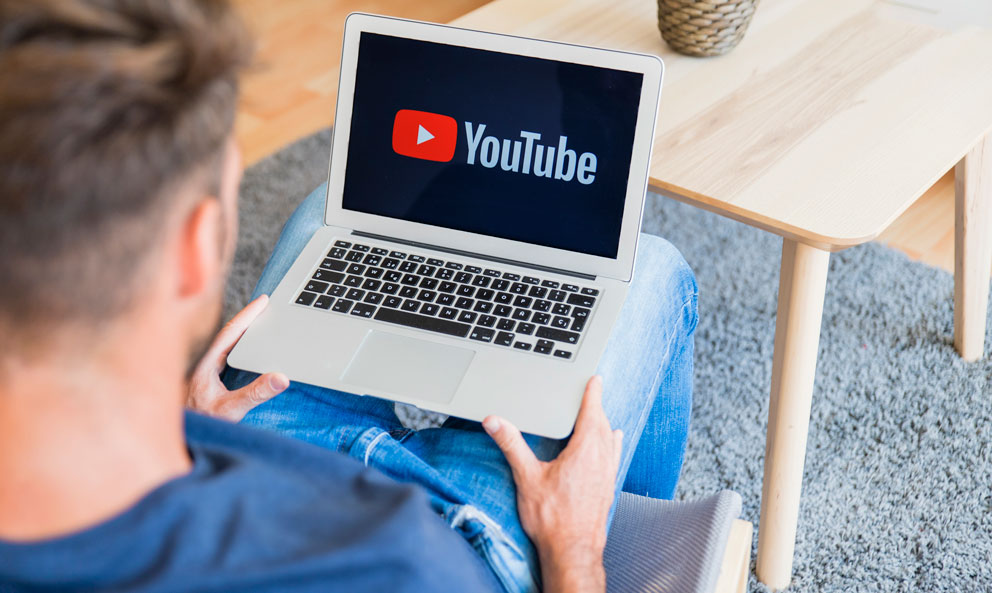
YouTube SEO: The Key Differences You Need To Know
By Thomas Roberts Posted 4/1/2020 in BUSINESS

YouTube was founded at the beginning of 2005 and acquired by Google at the end of 2006. It is no surprise then that Search Engine Optimization for both businesses is quite similar. However, there are important differences and understanding them is key to successful YouTube SEO. This article discusses both the similarities and the differences with focus on the concepts most important for successful YouTube SEO.
SEO Defined
SEO stands for Search Engine Optimization. When a user opens or searches in YouTube, content is displayed based on complex algorithms designed to keep you viewing content and ultimately generating revenue for YouTube. SEO is the practice of adjusting aspects of a post or page to result in the maximum desired viewership of that post or page. SEO is not as simple as content being placed in front of the most viewers. Successful SEO involves content being viewed by the correct viewers.

YouTube SEO is about more than having your video show up in the search results. Your video needs to show up for individuals inclined to view it. Just as import and in many cases more important than search results is your video appearing in “recommended videos” and in a user’s “dashboard.” Recommended videos, user dashboards, and searches all contribute significantly to a video’s traffic.
Text Matters
All marketers know that text is important for Google SEO. On YouTube, however, this element is often forgotten. Do not neglect descriptions on both your videos and your channel page. Clearly define the content of your video in both. Research keywords to make sure your video is targeting the correct audience. For those beginners out there, keywords are words common to other content your desired viewer either searches for or regularly views. YouTube does a lot of calculating for every view on their site and keywords are an import factor in what video’s display. Make sure to use keywords naturally in sentences, like you would for Google.

Despite having a sophisticated algorithm, YouTube still needs a little help determining video categories. By paying attention to not just your titles but also your descriptions, your videos are more likely to get recommended on videos of other creators dealing with similar topics. A YouTube user might have chosen someone else’s video to view, but the correct text will result in YouTube choosing your video to play next.
Time on Page vs. Session Time
Like with Google, YouTube videos with a certain title and description need to be relevant to a user’s search query. Clickbait titles and images are no longer recommended unless the video delivers on the content they advertise. Videos that have large drop-offs near the beginning of the content will not score well in YouTube’s search and discovery systems.
The time a user spends on your content is important for both Google and YouTube. “Time spent” is, however, defined differently on both platforms. For Google SEO, the “time on page” is the important metric. A high bounce rate isn’t an issue, as long as the user doesn’t visit another site for the same search query directly after bouncing. On YouTube, a bounce is a much bigger issue, as YouTube wants users to stay on their platform.

It is preferable to keep users on your channel, but even recommending a competitor is better than having a user leave the site. The main metric to keep in mind is “Session Time,” which includes not just time spent on your videos but on any YouTube videos. To increase session time, make relevant playlists to keep users on your content. Consider collaborating with other creators to send traffic to both channels. As said earlier, make sure your video title and description make the topic of your video clear. YouTube is then able to show relevant videos on the sidebar, increasing session time even further.
Long-term Marketing vs. Short-term Marketing
Blog posts and website pages take a long time to rank on Google. The waiting time can be frustrating, but it not only allows, but practically requires, that marketers have a long-term marketing strategy. You should, for example, build up backlinks and optimize pages based on the data in Google Analytics. Backlinks are hyperlinks from another page that goes to your page. The more backlinks the better as they are a key component in most search engine algorithms.

On YouTube, the performance of a video within the first 24 hours of publication is a major element of its long-term success. Unlike for your blog posts, you should make sure to prepare your marketing efforts such as social media posts in advance. The more traction your video gets directly after its publication, the better. The “Watch Party” option was added to YouTube for precisely this reason. While this function is not a logical fit for most business-related purposes the concept it implies is extremely important and underscores the need to prepare your audience in some way for the content you plan to publish.

A video’s performance is not only determined by the total amount of views. Other factors, such as the number of likes and comments, also matter greatly. “Like, comment and subscribe” may seem like an overused cliché, but there is a reason most successful creators include the phrase in every video.
The Magical Ten-Minute Mark
Many YouTube videos are just over ten minutes long. This ten-minute mark is not an SEO threshold, but an advertising threshold. Videos that are over ten minutes long may have an extra ad in the video, which the creators can place anywhere they want in the video. This extra ad can give established creators a significant amount of extra revenue.

For new creators who do not earn much income yet or use the content for generating income in other ways making videos that are over ten minutes long is less important. YouTube indeed prefers long session times, but videos with a lot of fluff have the opposite effect. Shorter videos with content such as songs do a lot better than longer videos with a high drop off percentage at the start of the video. It’s like Cristos Goodrow (Vice President of Engineering of YouTube) says: the length of your video should match your content.
Community Tab and Live Streams
The community tab and live streaming functions are often underused by YouTube Creators. Consider making use of these tools as many creators are reporting positive results. These positive results are partly because YouTube is pushing these tools, so it is giving creators who make use of them extra exposure. If you choose to use this functionality, make sure to plan and rehearse your content ahead of time. While live content can be removed after the fact embarrassing footage always finds a way to survive and recirculate.

Conclusion
SEO on Google and YouTube share a lot of similarities and trends, but there are also some major differences to keep in mind. If you take away nothing else from this article remember that the performance of a YouTube video within the first 24 hours is vital and bouncing is less accepted on YouTube than on Google. Plan for the long term and good luck with your YouTube videos.












